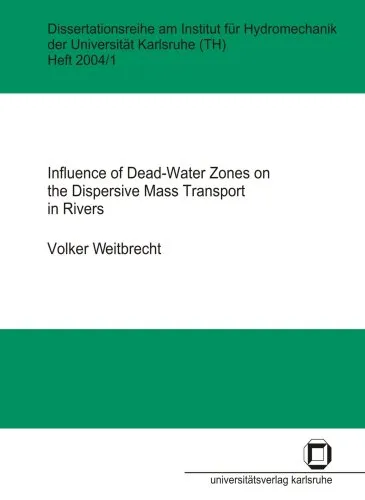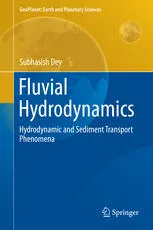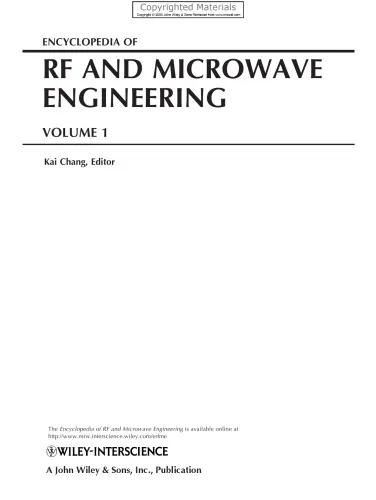Debris Flow: Mechanics, Prediction and Countermeasures (Balkema: Proceedings and Monographs in Engineering, Water and Earth Sciences)
4.5
بر اساس نظر کاربران

شما میتونید سوالاتتون در باره کتاب رو از هوش مصنوعیش بعد از ورود بپرسید
هر دانلود یا پرسش از هوش مصنوعی 2 امتیاز لازم دارد، برای بدست آوردن امتیاز رایگان، به صفحه ی راهنمای امتیازات سر بزنید و یک سری کار ارزشمند انجام بدینکتاب های مرتبط:
معرفی کتاب 'Debris Flow: Mechanics, Prediction and Countermeasures'
کتاب 'Debris Flow: Mechanics, Prediction and Countermeasures' یکی از منابع جامع و پیشرو در حوزهٔ علم Debris Flow است که توسط من، تموتسو تاکاهاشی، تألیف شده است. این کتاب به صورت تخصصی به مکانیسمها، تحلیلها، پیشبینیها، و راهکارهای مقابله با پدیدههای Debris Flow میپردازد و اطلاعاتی کلیدی را برای مهندسین عمران، متخصصین آبشناسی، و زمینشناسان ارائه میدهد.
خلاصهای جامع از کتاب
این کتاب در چند بخش اصلی تنظیم شده است که هر یک از آنها به بررسی جنبههای متفاوت Debris Flow اختصاص دارند. در فصلهای اولیه، مفهوم اساسی Debris Flow به همراه منشأ، گسترش، و مکانیسمهای فیزیکی آن تحلیل میشود. سپس در فصلهای پیشرفتهتر، به روشهای علمی و عددی برای پیشبینی این وقایع پرداخته شده و چالشهای مهندسی مرتبط با کنترل و کاهش خطرات آن بررسی شدهاند.
یکی از ویژگیهای برجسته این کتاب، ارائهٔ مطالعات موردی از رویدادهای Debris Flow در سراسر جهان است که از آنها برای تبیین اصول و روشهای کاربردی استفاده شده است. همچنین، تکنیکهای مدلسازی عددی، ابزارهای شبیهسازی، و نقش دادههای میدانی در توسعهٔ راهحلهای مهندسی به طور مفصل توضیح داده شدهاند.
نکات کلیدی
- درک عمیق از فرآیندها و مکانیسمهای مؤثر در Debris Flow شامل جاذبه، هیدرودینامیک، و خصوصیات ماده.
- استفاده از روشهای پیشرفته مدلسازی برای پیشبینی رفتار Debris Flow تحت شرایط مختلف.
- راهبردهای مقابله و طراحی سازههای مهندسی برای کاهش خطرات ناشی از این پدیده.
- تحلیل اقتصادی و محیطی تاثیرات Debris Flow بر مناطق پرخطر.
جملات معروف از کتاب
"Understanding the dynamic nature of debris flows is not just an academic exercise but a necessity for protecting lives and infrastructure."
"Prediction is the bridge between knowing and acting. Accuracy in predicting debris flows saves lives."
چرا این کتاب اهمیت دارد؟
پدیدههای Debris Flow به دلیل غیرقابل پیشبینی بودن و اثرات مخرب گسترده، همواره یکی از بزرگترین چالشها در مدیریت منابع طبیعی و مهندسی عمران بودهاند. این کتاب با ارائهٔ ترکیب جامعی از دانش تئوری و کاربردی، پلی بین تحقیقات آکادمیک و نیازهای صنعت برقرار میکند. برای مهندسین و محققینی که به دنبال راهکارهای اجرایی و نوین برای مقابله با خطرات طبیعی هستند، این اثر به مثابه یک منبع بینظیر و ضروری به شمار میآید.
علاوه بر این، این کتاب یکی از معدود منابعی است که به صورت جامع و با بهرهگیری از آخرین تحقیقات علمی، به موضوع Debris Flow و راهکارهای مدیریتی آن پرداخته است. اطلاعات ارائهشده در این کتاب نه تنها برای متخصصان بلکه برای سیاستگذاران و دانشجویان نیز ارزشمند است و به ایجاد درک عمیقتری از این پدیده کمک میکند.
Introduction to 'Debris Flow: Mechanics, Prediction and Countermeasures'
Welcome to the world of debris flow mechanics, an intricate field within geotechnical engineering and earth sciences that seeks to unravel the dynamics of one of nature's most devastating phenomena. My book, 'Debris Flow: Mechanics, Prediction and Countermeasures', published under the prestigious Balkema series, serves as an essential resource for researchers, engineers, and policy-makers who are grappling with the risks posed by debris flows. This book combines in-depth theoretical frameworks, meticulous case studies, and actionable countermeasure strategies to offer both academic and practical value to its readers.
Debris flows are fast-moving masses of soil, water, and organic matter, capable of wiping out entire landscapes and communities. Their occurrence is driven by complex interactions of geological, hydrological, and climatic factors. The purpose of this book is to provide an integrated perspective on these aspects and offer predictive tools and practical solutions to mitigate disasters caused by such flows.
Detailed Summary of the Book
The book is organized into three primary sections: mechanics, prediction methodologies, and countermeasures. Each section delves deeply into relevant theories and practices, supported by numerical modeling, laboratory experiments, and real-world data.
In the mechanics section, readers are introduced to the fundamental processes driving debris flow dynamics. We explore the physics governing flow rates, shear stress, particle interaction, and fluid-solid coupling mechanisms. This foundation enables a scientific understanding of how debris flows evolve from initiation to deposition.
The prediction methodology section is centered on forecasting the occurrence and movement of debris flows through quantitative approaches. Statistical tools, hazard mapping techniques, and advanced simulation models (such as finite element methods and GIS-based tools) are discussed. The aim is to bridge the gap between raw geological data and actionable insights for mitigation planning.
The countermeasures section is dedicated to engineering solutions and policy interventions. The book discusses structural mitigation techniques like the design of debris barriers, drainage systems, and reinforcement strategies, alongside non-structural approaches such as land-use zoning and public awareness campaigns. With a multi-disciplinary approach, this section empowers readers to manage debris flow risks effectively.
Key Takeaways
- A clear understanding of debris flow mechanics, including the factors influencing initiation, propagation, and termination.
- Effective methodologies for predicting debris flows through quantitative and qualitative approaches.
- Comprehensive insights into engineering countermeasures and non-engineering solutions to mitigate the impacts of debris flows.
- Real-world case studies that illustrate the application of theoretical concepts and disaster management practices.
- A balanced integration of science, engineering, and policy-making to address one of the most pressing issues in disaster mitigation.
Famous Quotes from the Book
“Debris flows represent a duality of nature's magnificence and unforgiving power, reminding us of the critical need to understand and mitigate their impact.”
“The science of debris flow prediction is not just about foreseeing disaster but about empowering communities to act strategically before calamity strikes.”
Why This Book Matters
Debris flows are not just geological phenomena; they are socio-economic and environmental disasters that impact countless lives worldwide. The significance of this book lies in its holistic approach to tackling debris flow hazards. By integrating advanced science, engineering practices, and strategic policymaking, this book serves as a critical guide for anyone involved in disaster risk reduction.
Whether you are an academic researching fluid mechanics, a government official drafting hazard mitigation policies, or an engineer tasked with designing debris flow barriers, this book provides actionable tools and frameworks to help you succeed. Its contribution to the field of earth sciences and disaster management makes it an invaluable addition to libraries, educational institutions, and professional organizations worldwide.
In a world increasingly challenged by natural disasters exacerbated by climate change, understanding and responding to debris flows is more important than ever. This book equips readers with the knowledge, foresight, and practical solutions necessary to protect lives, landscapes, and livelihoods.
دانلود رایگان مستقیم
شما میتونید سوالاتتون در باره کتاب رو از هوش مصنوعیش بعد از ورود بپرسید
دسترسی به کتابها از طریق پلتفرمهای قانونی و کتابخانههای عمومی نه تنها از حقوق نویسندگان و ناشران حمایت میکند، بلکه به پایداری فرهنگ کتابخوانی نیز کمک میرساند. پیش از دانلود، لحظهای به بررسی این گزینهها فکر کنید.
این کتاب رو در پلتفرم های دیگه ببینید
WorldCat به شما کمک میکنه تا کتاب ها رو در کتابخانه های سراسر دنیا پیدا کنید
امتیازها، نظرات تخصصی و صحبت ها درباره کتاب را در Goodreads ببینید
کتابهای کمیاب یا دست دوم را در AbeBooks پیدا کنید و بخرید
1220
بازدید4.5
امتیاز0
نظر98%
رضایتنظرات:
4.5
بر اساس 0 نظر کاربران
Questions & Answers
Ask questions about this book or help others by answering
No questions yet. Be the first to ask!













